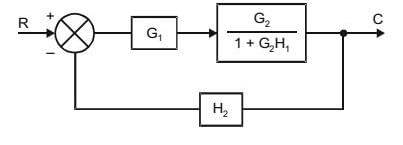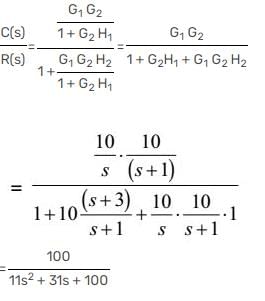Test: Block Diagram Algebra - Electrical Engineering (EE) MCQ
10 Questions MCQ Test - Test: Block Diagram Algebra
Consider the block diagram shown below:

If the transfer function of the system is given by T(s)=G1G2+G2G3/1+X. Then X is:
If the transfer function of the system is given by T(s)=G1G2+G2G3/1+X. Then X is:
For the block diagram given in the following figure, the expression of C/R is:

The closed loop gain of the system shown in the given figure is :
The advantage of block diagram representation is that it is possible to evaluate the contribution of each component to the overall performance of the system.
The overall transfer function from block diagram reduction for cascaded blocks is :
The overall transfer function of two blocks in parallel are :
Transfer function of the system is defined as the ratio of Laplace output to Laplace input considering initial conditions________
In the following block diagram, G1=10/s G2=10/s+1 H1=s+3, H2=1. The overall transfer function is given by :
















